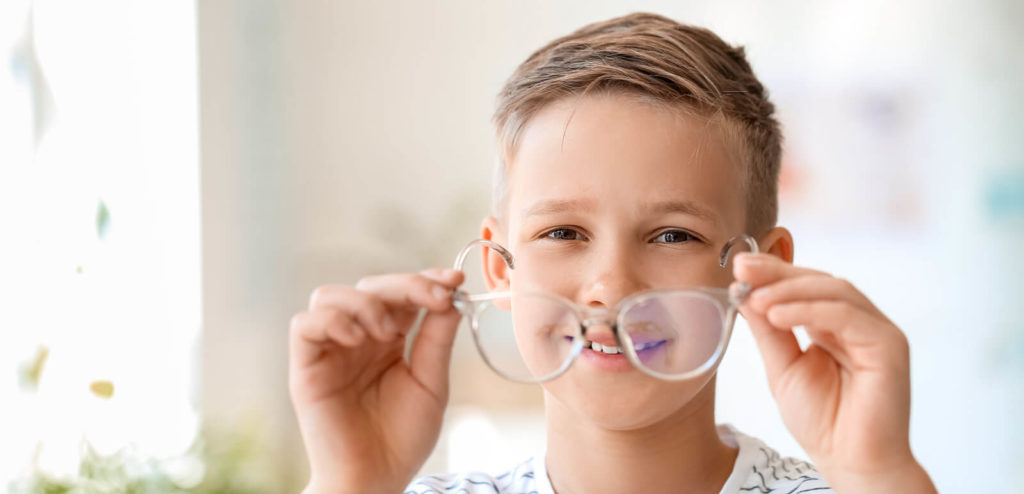It’s estimated that 30% of the population has myopia, more commonly referred to as nearsightedness, and that number is only growing. By 2050, it’s expected that almost 50% of the global population will have myopia.
Many adults already treat myopia through corrective glasses or contact lenses. But optometrists and researchers are developing technology to help limit the progression of myopia in children and preserve their eyesight.
What Is Myopia?
Nearsightedness, or myopia, is a refractive error where close objects appear clearly, but objects at a distance are blurry and unfocused. Myopia can lead to eye strain, headaches, and squinting if not appropriately treated.
Myopia occurs when the shape of your eye prevents light from bending correctly to reach the back of your eye, the retina. If the cornea at the front of your eye is curved incorrectly, the light will fall short of the retina. Nearsightedness can also occur when the length of your eye impedes the light from reaching the retina. When light doesn’t hit the retina as it should, it can cause unfocused vision.
Treating Myopia
The standard method for treating myopia is corrective lenses. Contact lenses and glasses get stronger prescriptions as nearsightedness worsens. They work to correct the curve of your eye or the added length to the eye to help light reach the retina.
In some cases, laser eye surgery is used to correct refractive errors. This is an option for correcting myopia that may decrease the strength of your glasses or contact lens prescription or remove the need for them. Types of surgery include:
- Laser-assisted in situ keratomileusis (LASIK), in which a surgeon makes a thin flap into the cornea and use a laser to remove corneal tissue and flatten the dome-like shape
- Laser-assisted subepithelial keratectomy (LASEK), in which a surgeon makes a thin flap in the cornea’s outer layer, or the epithelium, and uses a laser to reshape and flatten the cornea
- Photorefractive keratectomy (PRK), during which a surgeon will remove the epithelium altogether, reshape the cornea, and cover the cornea with a temporary, protective lens until the epithelium grows back
Myopia in Children
Children are at risk of developing myopia as their eyes change and grow. With a lifestyle dominated by screens and doing homework online, kids are experiencing eye conditions sooner, but modern technology can help.

What Are MiyoSmart Lenses & How Do They Work?
MiyoSmart lenses are specifically designed to control the progression of myopia, making them ideal for children. Traditional myopia treatment includes single-vision lenses, but they don’t slow nearsightedness progression, so vision can still worsen over time.
MiyoSmart lenses use a technology called Defocus Incorporated Multiple Segments (D.I.M.S). The front of the lens has a small clear zone in the centre, with the complete prescription surrounded by small honeycomb-shaped zones of defocus. In this zone, the prescription is weaker, allowing the patient to simultaneously see through a focused and unfocused lens, regardless of viewing distance.
By training the brain to look through both focused and unfocused lenses, nearsightedness can be delayed. In a clinical study, D.I.M.S. technology found that MiyoSmart lenses can reduce myopia progression by 60% on average.
Why Choose MiyoSmart Lenses for Children with Myopia?
MiyoSmart lenses are an innovative and simple way to manage myopia progression. By wearing glasses fitted with MiyoSmart lenses, children’s myopia can be slowed and can correct the refractive error at the same time.
The lenses are made of polycarbonate and are sturdy enough for the most active kids. The material is impact-resistant, scratch-resistant, and has UV protection for outdoor adventures.
Manage Myopia in Your Child’s Eyes
Detecting nearsightedness in your child’s eyes can allow our team to take corrective action sooner. Maintain your child’s regular eye exam schedule to test for nearsightedness and other refractive errors.Schedule an appointment with our team to help your child maintain clear, healthy vision.

